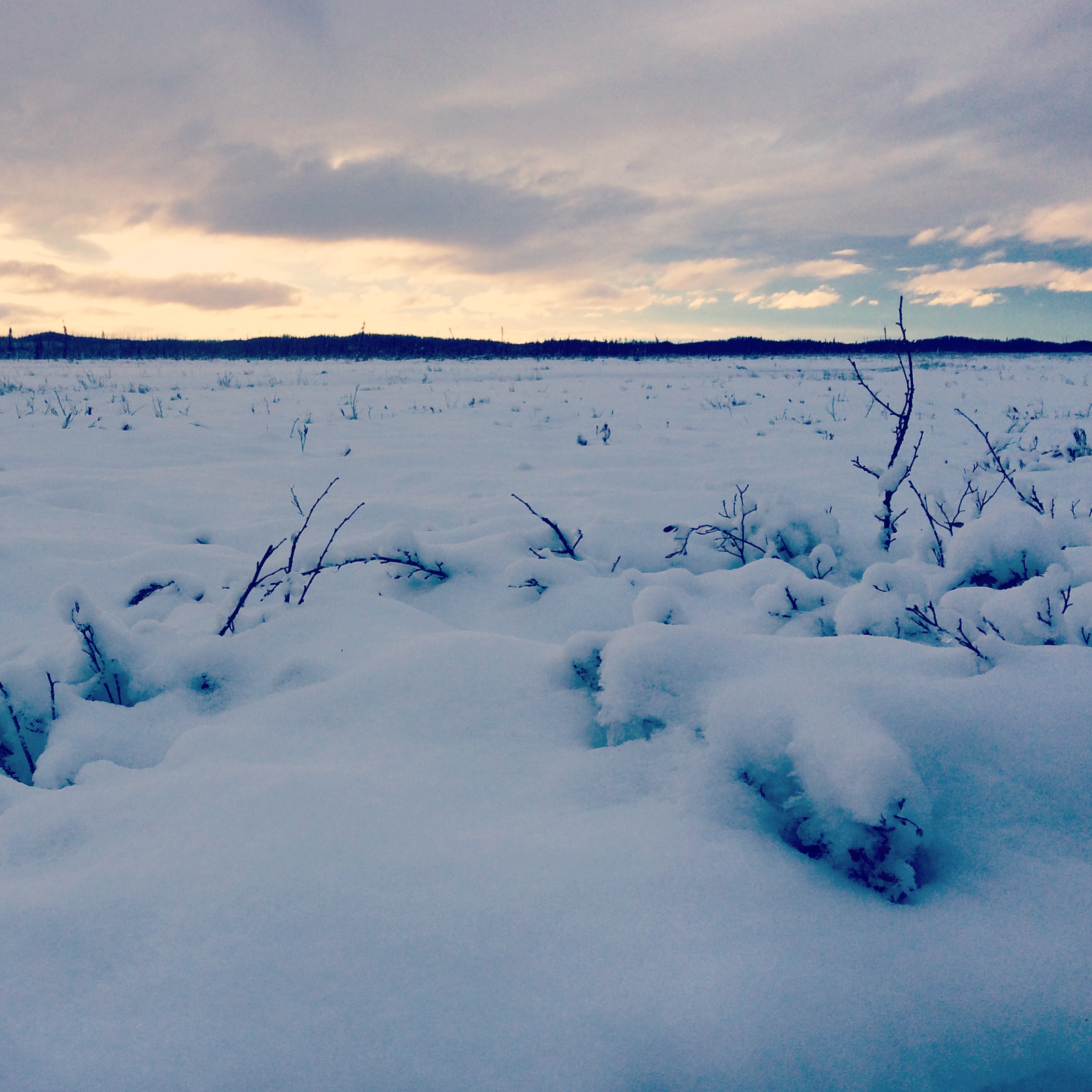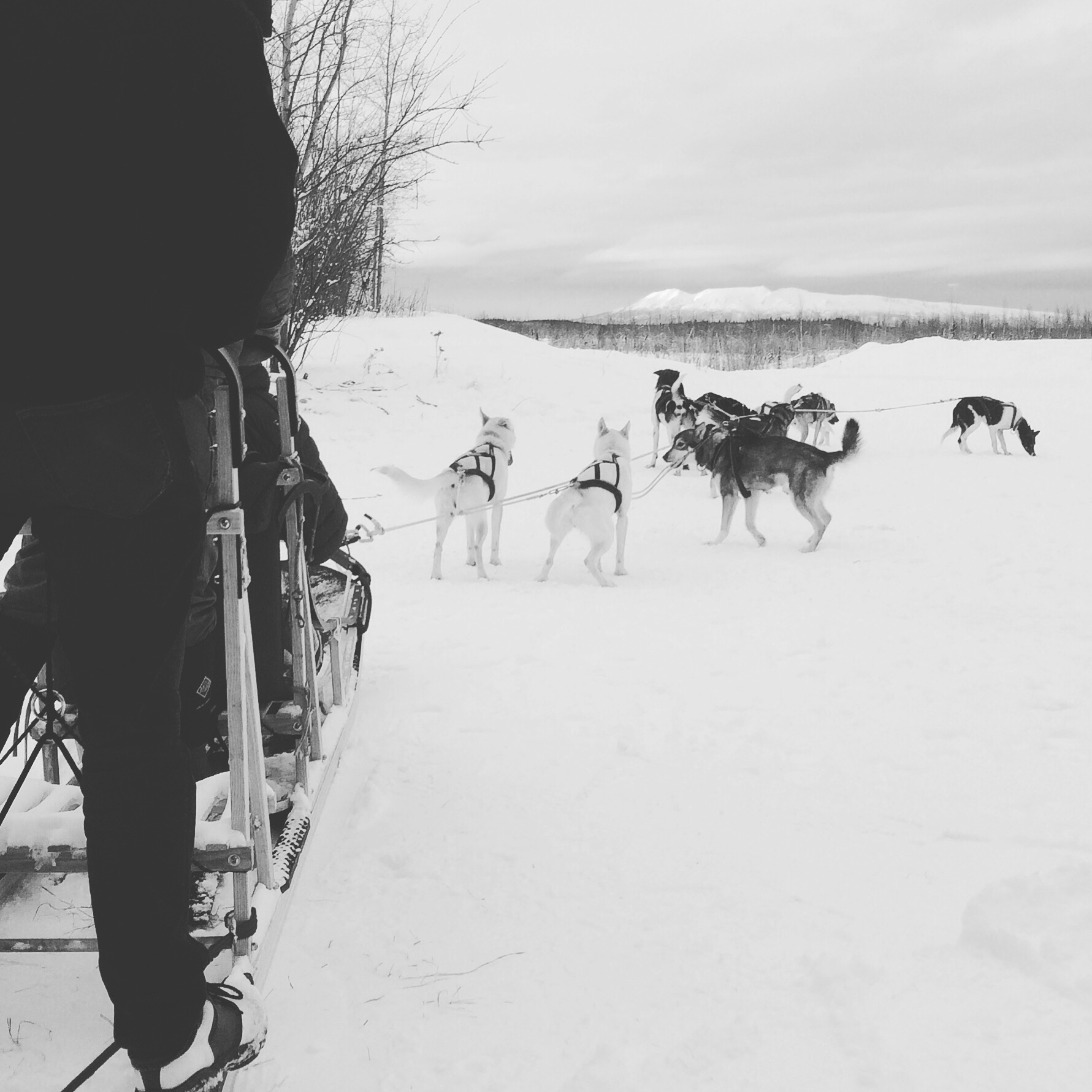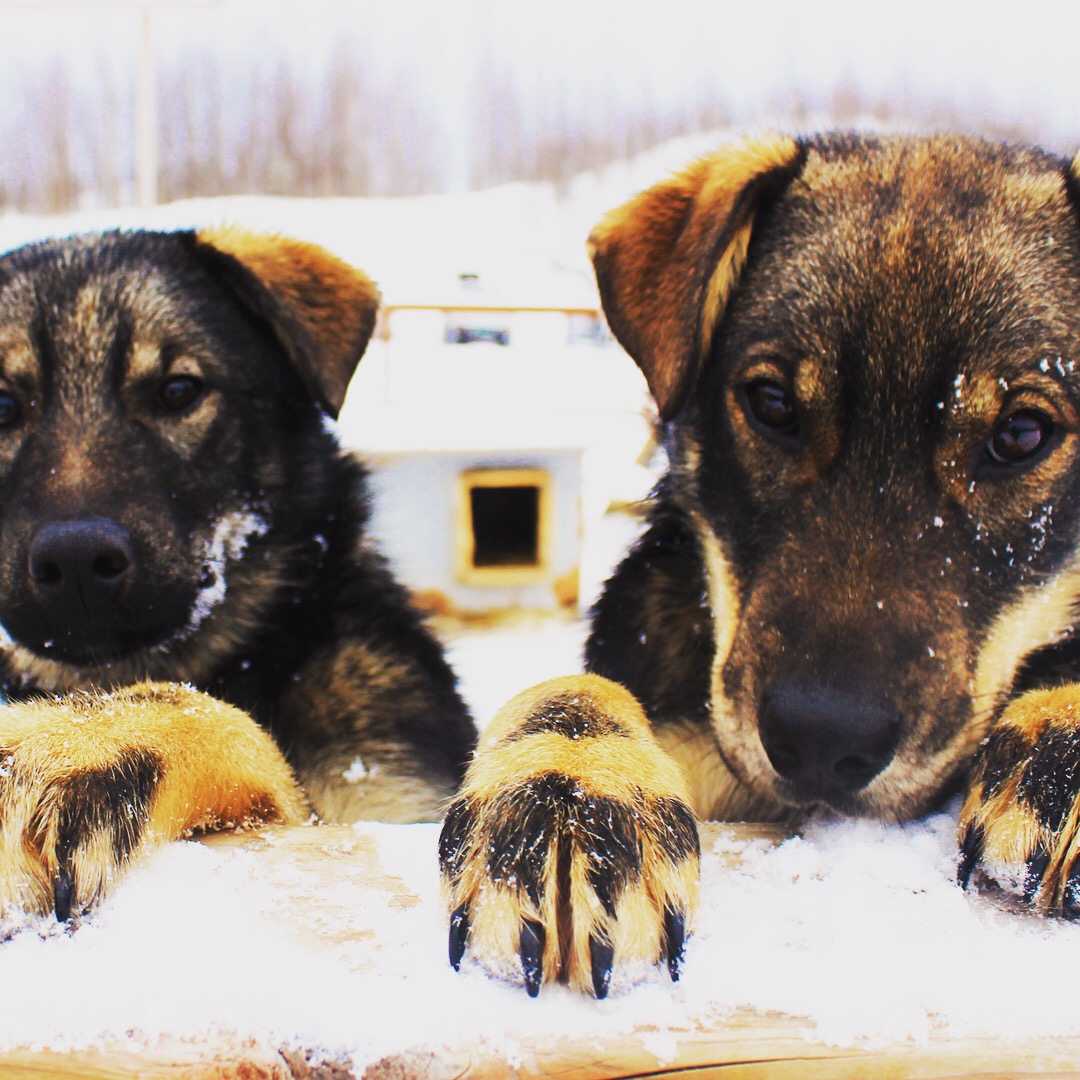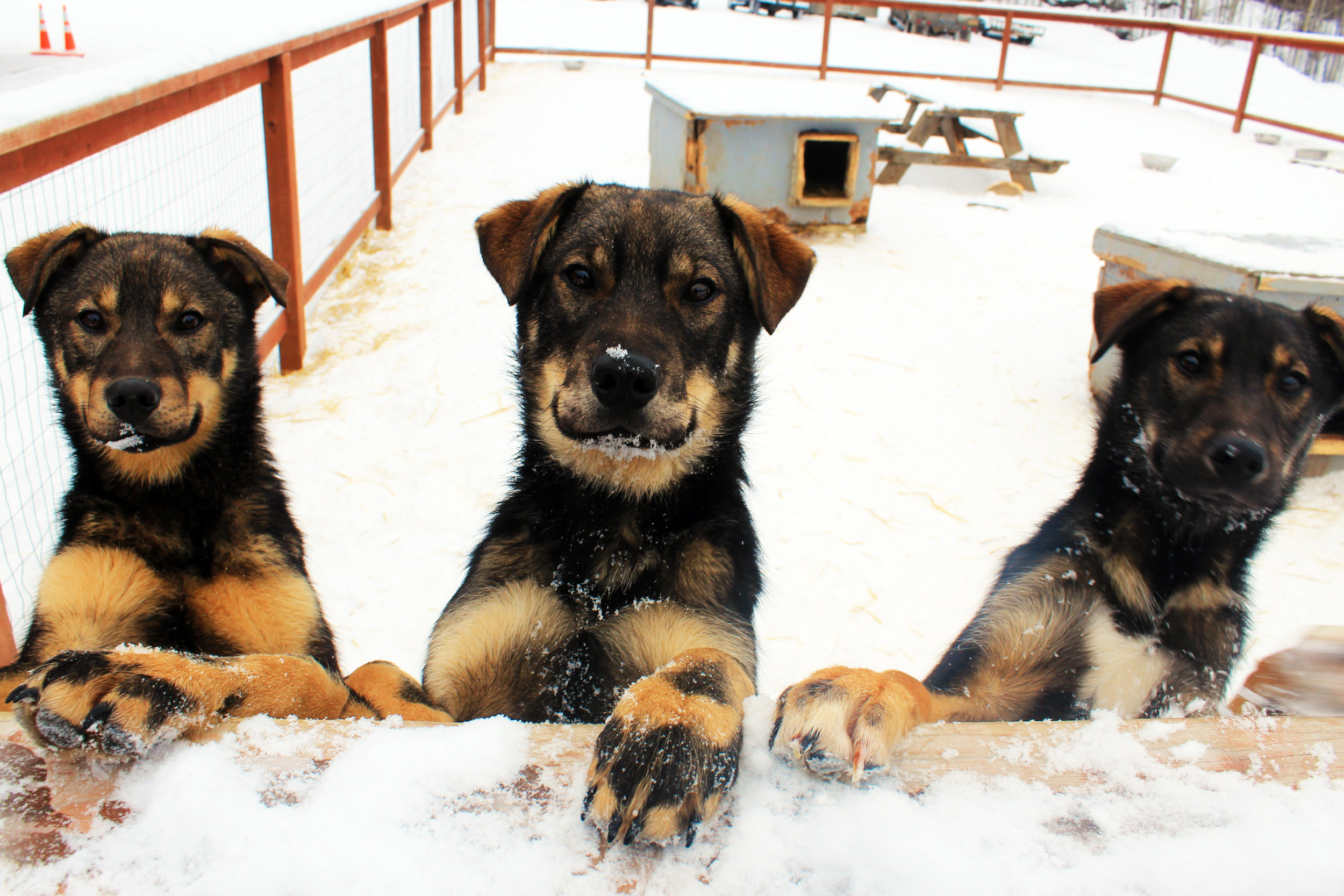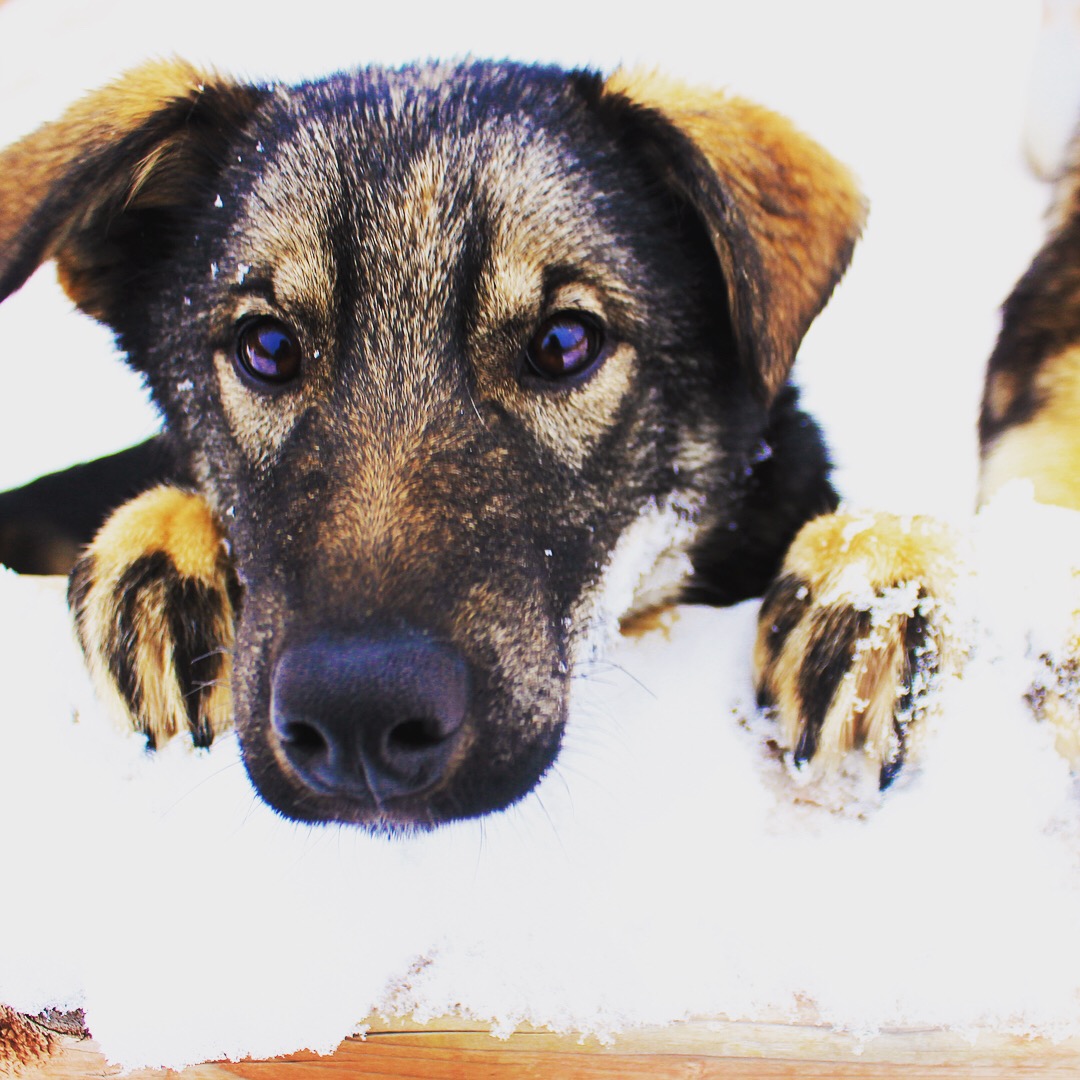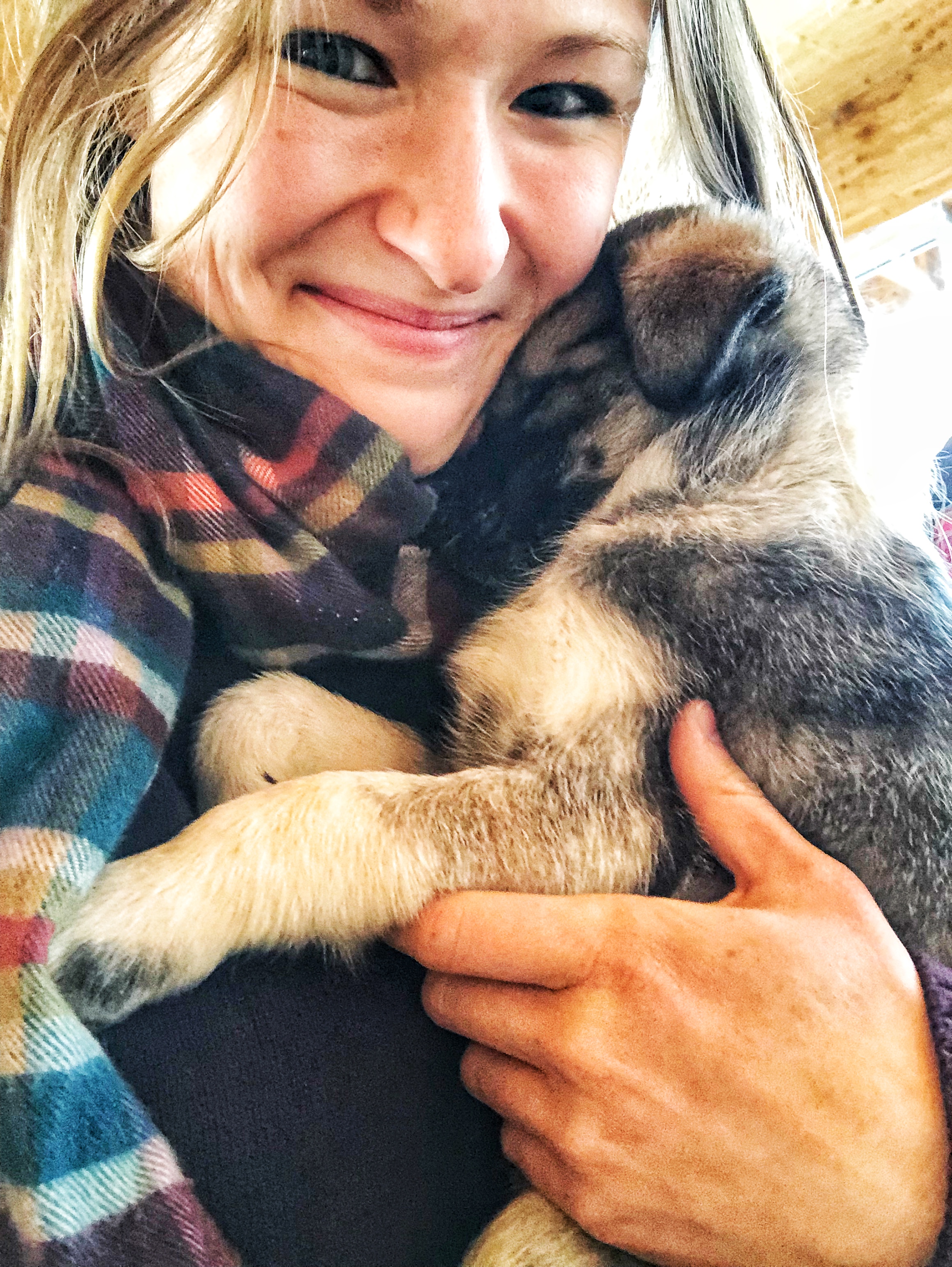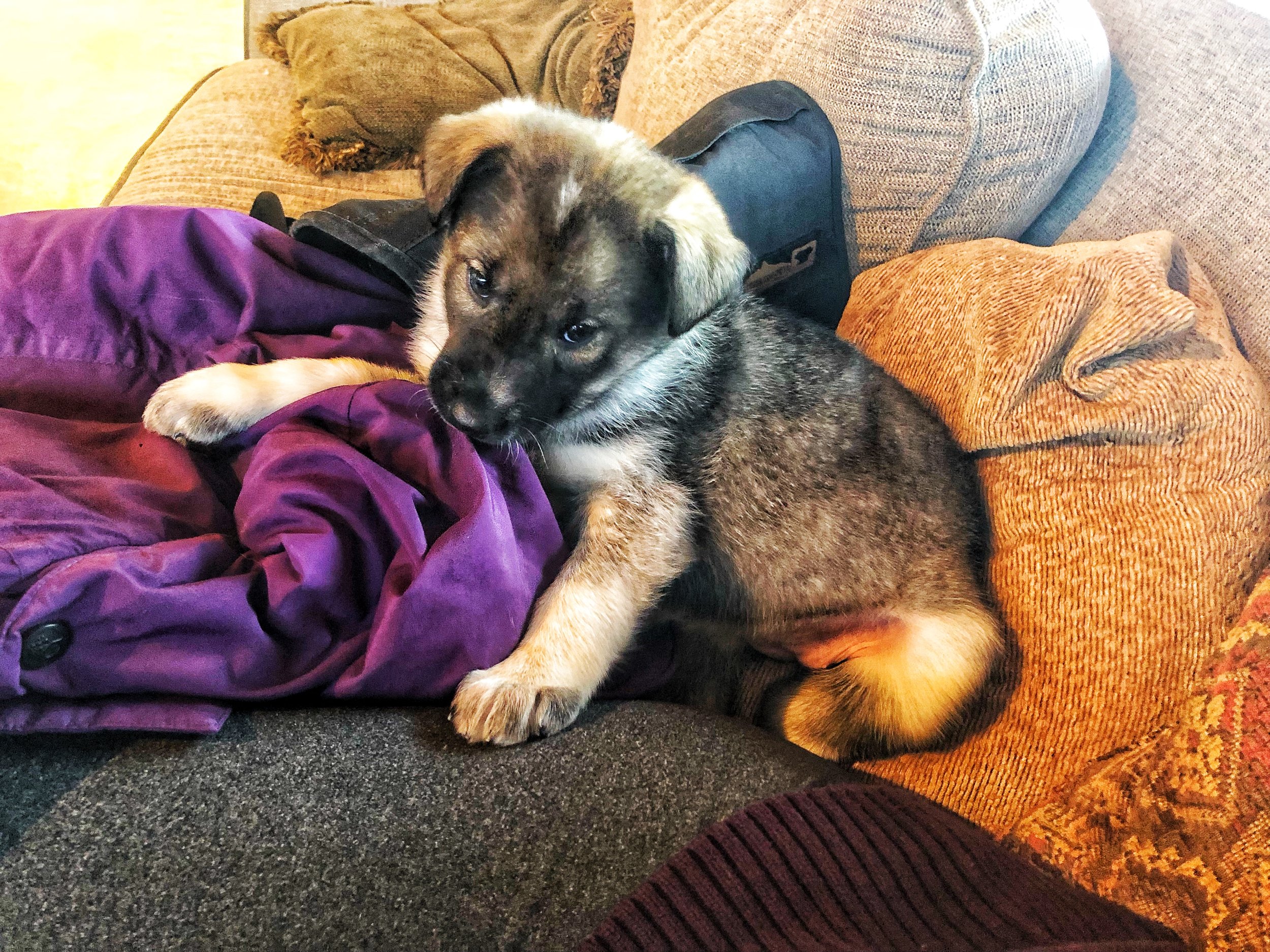Balto, I'd Be Lost Without You: Adventures in Dog Mushing in Alaska
When I was four years old, I decided I was going to be a sled dog. Not a musher; an actual sled dog, as in the kind that runs across hundreds of miles of frozen tundra to save remote villages from Diphtheria. Or, in the modern era, maybe just run the Iditarod.
My Iditarod dreams were inspired by none other than Balto, the Kevin Bacon-voiced wolf-dog star of the 1995 animated film of the same name. I watched that VHS tape so many times it eventually wore out. Meanwhile, I wore tracks in the carpet pulling a plastic pulk sled around the house on all fours by a strand of yarn looped around my neck. It always ended with my mother yelling at me to stop before I choked myself. This, of course, only served as encouragement. After all, they told Balto he’d never be a sled dog either.
~
Years later, my obsession with Balto gave way to an obsession with books by Jack London, Gary Paulsen, and others that told untamed and (in retrospect) wildly unrealistic tales of youngsters setting out alone into the woods. I would be like Sam Gribley, who, in My Side of the Mountain, left his home and family to live in a hollowed out tree. Or maybe Jack Conroy: homesteading land in the middle of the Alaskan wilderness befriending a wolf as I panned for gold.
“Mom, can I run away and live in the woods?” Somewhere in the pages, I had apparently missed the core concept of running away. My career as a runaway joined that of sled dog in the pile of shattered aspirations of my youth.
I stubbornly decided that didn’t mean I couldn’t live like a runaway. The summer I turned ten, I enacted a self-imposed ostracism from all things I considered luxuriously modern to live in a tree fort at the edge of our three-acre property, which consisted of a small ring of pine and tamarack trees with a fire pit, pine bough bed, and a collection of fallen logs that stood for different pieces of furniture. Day after day, I whiled away time by whittling sticks into arrows for my self-made bow and concocting salads of foraged dandelion leaves, clover blossoms, and thimbleberries. For one glorious, albeit brief, summer, I lived and breathed what I thought was the pinnacle of wilderness survival until the Montana snows forced me back to civilization. Such became the cycle of many more doomed adventurous delusions that faded when life got in the way.
~
I was 22 years old when my boyfriend Chris turned to me and said, “I was thinking about where we might go once this is over.” He meant the great Latin American misadventure of which we were directly in the middle. “What do you think about Alaska?” The second he said the word, some part of my soul that had lain dormant for years sparked.
Alaska. The word stood for possibility, the tabula rasa I so desperately craved. There was even something about the way it begged to be pronounced, the second syllable emphasized in such a way that one couldn’t help but sound awestruck and hopeful.
Iditarod legend Martin Buser writes of the effect in his memoir, Dog Man: “Alaska was a mysterious word to me then. It was a place on the map, to be sure, but its real immensity came from hearing people say it aloud. The way they pronounced it suggested something on a grander scale, something engrained deep in the human experience. It was a word that felt untamed, felt wild, and it grabbed me by my curiosity and refused to let go.”
Even mountaineering legend Bradford Washburn wrote, “Alaska! The word alone thrills us with the glamour of exploration and adventure” (Bradford on Mt. Fairweather).
Alaska. I mentally mouthed the word. “Sounds good.”
So off to the Last Frontier we went, with everything we owned loaded into a 1999 Toyota Camry named Mortimer. Later, we would joke about the proverbial dart-in-the-map that had brought us there, but deep down I knew it was more than spontaneity and happenstance. For me, it was fate. Alaska had wormed its way into my bones at childhood and I had been entertaining a love affair with that stranger ever since.
~
The first year in Alaska was hard, but not in the ways I expected. Montana bred, I was unfazed by the piles of snow, the sub-zero temperatures, even the bad road conditions in conjunction with people I wasn’t sure should possess driver’s licenses. My struggles were more of an existential nature. In Montana, I was a seasoned local and bold explorer who knew the ins and outs of every mountain and valley. Alaskans, however, were qualitatively more rugged and hardcore than Montanans, and just about everyone in the Alaska outdoor scene was inarguably a way bigger badass than me. I was what native Alaskans referred to as a cheechako: a tender-footed newcomer.
Struck by an overwhelming feeling of personal mediocrity, I realized I wasn’t a bold explorer like Jack or Sam, but rather an ignorant yuppie eager (read as: desperate) to learn. I wanted to find my Alaska, the piece of the land to set my soul on fire and make me say, “I belong here.”
I couldn’t find that by avoiding the things that made me feel inept. Instead, I immediately found myself jobs in the outdoor industry and surrounded myself with people with potential to teach me. I started at a gear shop, then a rock gym, until I finally lucked out and managed to worm my way into a guiding gig on the recommendation of a friend. Coincidentally, one tour our company ran was a contracted shuttle service for dog sled rides by Martin Buser’s Happy Trails Kennels in Big Lake. Just like that, I was entrenched in the Alaska of my childhood, even if it wasn’t as a sled dog or even a musher.
My moment finally came when James, the kennel’s main handler, said, “Hey we’re pretty slow today. You want to learn to drive a team?” While I had joined many of the rides, I hadn’t yet had the opportunity to fly solo.
“Do you even need to ask?”
James took me out into the yard and tossed the harnesses in the snow, leaving me to wrestle the dogs into them.
Me & my best boy, Gasherbrum. This little pup has stolen my heart over the last two winters,
In front was Cudighi, a brutish youngster who liked to pick on the little girl pup in the house next to his, like a ten-year-old boy pulling the pigtails of his crush. Next to him: Flash, a grizzled and graying old man nearing the end of his sled-pulling career. Behind was Pinion, a lean little girl with a pointy snout and seemingly endless supply of energy, which she spent either pulling or darting back and forth under the gangline. Finally, there was sweet Gasherbrum, the docile and shy, broad-headed dog that had stolen my heart. I had spent the last few months earning his affection, and he gone from avoiding me as far as his chain would allow to greeting me with a gentle headbutt into my leg and a single kiss right on the tip of my nose. He was different from the others, dissonant to his surroundings, and I thus saw something of myself in him.
Pinion, Gasherbrum, Flash, and Cudighi. I looked proudly over my team; they looked at me like unruly middle school students at a substitute teacher right before sending them running to principal’s office in tears.
The most chaotic point at a kennel is right before a team takes off on a run. Every single dog, all 60-something of them, start barking and howling and pulling at their chains. Then there’s a moment, where the musher steps on the runners and says, “Ready?”, respectfully, and all noise ceases in single moment of deafening silence. Chaos converges into clarity, a hive mind of dogs all thinking one thing: Yes, we are ready to run. I had witnessed the moment so many times but there, standing on the icy runners with hands gripping the handlebar a little too tight, it was different. Breathtaking.
“Alright!” I said, and I as lifted my foot off the brake, we took off.
The hardest part of the run would be an immediately, moderately steep hill descending from the kennels down onto the frozen waterways of the Big Lake Trail system. If could just make it down that hill without falling, I had a chance to keep from humiliating myself. It was also incidentally the perfect test-piece for the dogs to determine whether or not I was worthy to drive them. Upon entering the hill, I braked hard on the claw brake to keep the line taught and the sled from sliding under the dogs’ paws. Sensing my fear, the dogs hugged the left embankment, forcing the left runners of my sled up the side hill. Keeping my right foot firmly on the brake, I threw my weight hard into my left hip trying desperately to keep the sled from tipping. After ten long, precarious seconds, the hill flattened and the sled glided onto smooth trail.
The dogs had seen my weakness and seized the opportunity to take control. It was my turn. When mushing, the challenge isn’t making the dogs run; it’s pacing that run so they don’t burn out. For a four-dog team, I was instructed to keep their speed between 8 and 10 mph.
Between the runners, just behind the claw brake, was a more gentle rubber mat dragging in the snow. When the speedometer on my handlebars dipped over ten, I’d press my weight onto the mat, until the numbers dipped down. Eventually, they seemed to understand, Oh yes, this is how fast I am supposed to run. Until you give them a brief rest, after which the promptly forget.
Ten miles an hour sounds fast when you think of yourself standing completely unprotected on narrow, icy pieces of wood, but it’s really not. I quickly found myself letting the speedometer dip over ten, to eleven, twelve, even thirteen, before stepping onto the mat. It was entirely selfish, but I wanted to go faster, to feel how real mushers felt being hauled by a sixteen dog perfectly oiled machine. It was intoxicating, a temporal black hole of hypnotic landscape and stinging cheeks.
Every so often, I stopped to let the dogs rest, where they would promptly dive into the snow banks on either side of the trail, scooping it up in their mouths and marking their territory with any small drop of urine they could muster. At one stop, I removed the secondary brake hook from its holster and imbedded it deep into the snow beside the sled before stepping away.
As I was admiring the landscape, the dogs seized their opportunity and took off in a coordinated effort strong enough to rip the brake right out of the snow. With the sled barreling toward me, I instinctively snapped out my arm, snatching up the handlebar and pulling my body a full 180° onto the runners. The surge adrenaline faded to astonishment that I had managed to catch the team rather than embarrassingly force James to chase after them on snow machine. Ahead a fast right hand turn approached. “Gee,” I said quietly, barely an extension of my breath, and yet the dogs responded with a quick turn down the right path.
I realized that in resisting their attempts to throw me and thereby shed the weakest link, I had earned respect. I had proven that I was, in some small way, worthy to be their musher. My heart swelled with pride, for myself and for these animals.
Before Balto’s heroic departure to fetch the lost antitoxin, Boris, the sarcastic Russian goose, advises him, “A dog cannot make this journey alone. But maybe… a wolf can.”
I had no doubt that these dogs could make this journey alone, wolves or not. They didn’t need me, even if the reverse was not true. I realized that was a pretty apt metaphor for Alaska as a whole. I was insignificant in this whole equation. Alaska would be exactly the same had I never stepped foot there, but I was immeasurably changed. Up to that point, Alaska had only made me feel self conscious about my inferiority, but there, in the shadow of Mt. Susitna, I found peace in that great sensation of insignificance. If these brilliant athletes could accept me, then this land could, too, despite my ineptitude and weakness.
James would be expecting me back at the kennels in a few minutes, but all I wanted was to keep going, to drive those dogs into the horizon until the earth and time fell out from beneath us. Just man and dog. Archaic. Essential.
“Woahhhh.” The dogs stopped and piled into the snow. I could see their hot breath hanging in the icy air around their muzzles, looking back at me with tongues lolling out the sides of their mouths and wide, eager eyes ready to run for me. Suddenly, there were tears in my eyes and a lump in my throat. In that moment, however brief, I was a musher and these were my dogs. I got off the sled, trusting that they wouldn’t rip the brake from the snow again, and planted my butt in the crusty snow right in the middle of the huddle, burying my face and hands in their thick, double layer coats. “Good dogs.”
I suddenly felt as though I were instead sitting cross-legged in front of the television again, mouthing along as Rosie, the little girl saved from diphtheria, wraps her arms around Balto and tells him, “Balto, I’d be lost without you.”
I would be, too, I thought, because somehow these dogs, this sport, this tradition, had been pushing me toward this moment of clarity my entire life.
At last, I had found my Alaska.
(Published in March 2018 in Shwak Magazine)
I got to be part of the making of this wonderful promo video for the Alaska Mushing School.
How To Go Dog Mushing in Alaska
If you’re visiting Alaska in the winter (or summer, though options and locations are more limited and expensive) dog mushing simply has to be on your to-do list. Maybe I’m a little biased (see above) but I’m apt to say it’s one of the most incredible things to do in Alaska, and I’ve done quite a few. There’s something so entirely breathtaking and indescribable to be out in in the wild with these dogs. Man and dog, nothing more.
Is it humane?
As a tour guide, I get this question lot. It’s great that people are so concerned about animal welfare, but I do want to reassure everything that dog mushing (as a sport as a whole, not necessarily individual mushers) is completely humane. Alaskan huskies LOVE to run. Genuinely. They’re bred for it and they would go crazy without it. The second you start to pull out harnesses, the entire kennel erupts in a huge cacophony of yips and barks that scream, “Pick me, pick me!” Like normal dogs need exercise, these dogs need to run to be physically healthy and happy.
Plus, the kennel I specifically work with, Happy Trails Kennel, is owned by Martin Buser, four-time Iditarod champion and five-time winner of the highly respected Leonard Sepphala humanitarian award. This award is voted on each Iditarod by the veterinarians working at each checkpoint of the race, monitoring the well-being of the animals. No other musher has won this prestigious award so many times. This doesn’t mean that every musher is so kind to their animals, but if you visit Martin’s kennel, you can be sure you’ll be working with happy and well-cared for animals.
What to Bring:
Warm clothes: Layer, layer, layer: You can always take layers off and throw them on the sled, but you can’t put on layers you don’t have. DO NOT wear cotton. A lot of people think jeans with a thermal layer underneath are sufficient. They’re not. Once that cotton of the denim gets wet, it’ll freeze and you’ll be cold no matter how many layers you have on. Wear some sort of water resistant outer snowpant.
Mittens with Handwarmers: Your hands will get cold in depths of Alaska winter. Make sure you can enjoy the ride with toasty warm fingers. The Handwarmer will also double to help keep your phone warm if you keep it tucked in the mitt/ Lithium ion batteries in cell hpones and cameras frequently freeze and die on the trail, so you don’t want to risk not having the chance to capture half the magic on film.
Balaclava or neck gaiter: Your face will definitely feel the sting of winter as the dog rush through the ivy air. Bring something to cover your face.
Warm, waterproof boots: A must-have, unless you want to spend a miserable time on the sled. If you plan on doing some hand-on mushing yourself, aim for boots with good lugged sole to help you get some extra traction on the runners.
Where to Go Mushing
From Anchorage, Wasilla, or Palmer:
Martin Buser’s Happy Trails Kennels (aka Alaska Mushing School)
Classic Dog Sled Ride: $169 pp, $269pp w/ shuttle from Anchorage
Half-day Mushing School (you get your own team of 4 dogs and will learn to drive them yourself): $299pp, $399 pp w/ shuttle from Anchorage
Full-day Mushing Adventure: $499pp
From Willow (official start to the Iditarod):
Matthew Failor’s 17th Dog Kennels
Contact for tour options and pricing
From Talkeetna:
Heather Siirtola’s Hardcore Huskies
Classic Dog Sled Ride: $150 pp
Dallas Seavey’s Ididaride
Kennel tour and dog sled ride: $179 pp, 159 per child
From Fairbanks:
Short Winter Tour: $75 pp
One-Hour Winter Adventure: $135 pp
Mushing School: $295 pp
3-Day Overnight Tour: $1,200 pp
Scenic Day Mushing Tour: $125 pp
From Seward:
For a hands-off mushing experience, consider Jeff King’s Husky Homestead located outside Denali National Park. This is great for those looking to learn more about mushing culture and even sneak in a few puppy snuggles without getting on the actual sled.
$59 per adult, $39 per child


